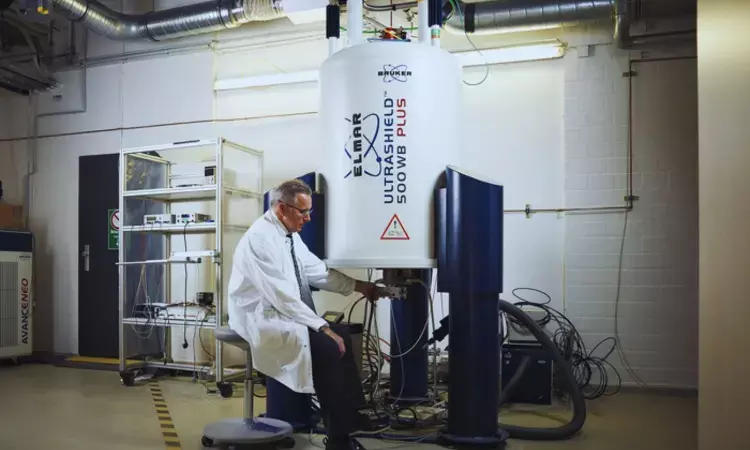- Home
- Medical news & Guidelines
- Anesthesiology
- Cardiology and CTVS
- Critical Care
- Dentistry
- Dermatology
- Diabetes and Endocrinology
- ENT
- Gastroenterology
- Medicine
- Nephrology
- Neurology
- Obstretics-Gynaecology
- Oncology
- Ophthalmology
- Orthopaedics
- Pediatrics-Neonatology
- Psychiatry
- Pulmonology
- Radiology
- Surgery
- Urology
- Laboratory Medicine
- Diet
- Nursing
- Paramedical
- Physiotherapy
- Health news
- Fact Check
- Bone Health Fact Check
- Brain Health Fact Check
- Cancer Related Fact Check
- Child Care Fact Check
- Dental and oral health fact check
- Diabetes and metabolic health fact check
- Diet and Nutrition Fact Check
- Eye and ENT Care Fact Check
- Fitness fact check
- Gut health fact check
- Heart health fact check
- Kidney health fact check
- Medical education fact check
- Men's health fact check
- Respiratory fact check
- Skin and hair care fact check
- Vaccine and Immunization fact check
- Women's health fact check
- AYUSH
- State News
- Andaman and Nicobar Islands
- Andhra Pradesh
- Arunachal Pradesh
- Assam
- Bihar
- Chandigarh
- Chattisgarh
- Dadra and Nagar Haveli
- Daman and Diu
- Delhi
- Goa
- Gujarat
- Haryana
- Himachal Pradesh
- Jammu & Kashmir
- Jharkhand
- Karnataka
- Kerala
- Ladakh
- Lakshadweep
- Madhya Pradesh
- Maharashtra
- Manipur
- Meghalaya
- Mizoram
- Nagaland
- Odisha
- Puducherry
- Punjab
- Rajasthan
- Sikkim
- Tamil Nadu
- Telangana
- Tripura
- Uttar Pradesh
- Uttrakhand
- West Bengal
- Medical Education
- Industry
Tabletop Magnetic Resonance Units may Revolutionize Diagnostics and Materials Analysis

In the HyPERiON CRC coordinated by the Karlsruhe Institute of Technology (KIT), researchers from KIT and the universities of Kaiserslautern, Konstanz and Stuttgart are jointly developing technology for compact high-performance magnetic resonance units. In the future, the devices could be used in the chemical and pharmaceutical industries, in medical practices or at border checkpoints.
The German Research Foundation is funding the interdisciplinary group with more than 10.6 million euros for four years starting on July 1, 2022.
Magnetic resonance is both the most chemically specific and the most versatile measurement method for acquiring detailed information on the structure and function of molecular matter. This makes it the fundamental technology for characterizations in chemical, biological or materials research. However, its widespread use is hindered by its low sensitivity and the relatively high level of specialization required for working with it.
The Collaborative Research Center for High Performance Compact Magnetic Resonance (HyPERiON) aims to change this by questioning conventional ideas along the entire signal processing chain. Its goal is to improve the sensitivity, resilience, and usability of magnetic resonance in equal measure. The team headed by CRC spokesperson Professor Jan G. Korvink from KIT's Institute of Microstructure Technology (IMT) seeks to reduce the volume of high-performance magnetic resonance systems from 2 cubic meters down to the size of a 10-liter bucket-a factor of more than 200.
This would bring them out of laboratories and enable their widespread use, for example in chemical and pharmaceutical production facilities, physicians' practices or border checkpoints. "This is ultimately about exploring new and exciting applications in chemistry, biology and even chemical engineering," says Korvink.
Miniaturization Makes Magnetic Resonance Available Even for Smaller Budgets
To achieve its goals, the CRC is focusing on the miniaturization of all components involved in magnetic resonance technology: superconducting magnets, cooling systems, high-speed electronics, magnetic resonance sensors, devices for ultra-fast data transfer, and devices for the nuclear spin hyperpolarization of materials and biological samples.
"Integrating all these technologies in a modern and portable platform will enable us to drive socially relevant applications such as diagnosing diseases, using medical implants, or discovering medicines," says Korvink. The partners in the CRC expect the results of their research to make the use of magnetic resonance for fast and high-resolution characterization of materials affordable for facilities with smaller budgets, and to advance research in chemistry and materials science in general.
Speeding up the Search for the Best Materials
There are many ways in which society's well-being is crucially dependent on access to the best materials. But the requirements are complex and involve not only a material's function but also its effects on our biological systems and the environment, and on how it can be recovered or broken down. "If materials can be characterized quickly and with high resolution for a very large number of variants with only tiny samples, and if we can perform the tests under operational conditions and analyze decomposition processes, then we'll have a chance to find the best starting materials to fulfill our expectations.
This is also important from the point of view of minimizing the carbon footprint. HyPERiON is going to fundamentally change our capabilities for material characterization and will train a new generation of young researchers and engineers in its application to societal challenges," says Korvink.
In addition to HyPERiON, KIT is involved in another new Collaborative Research Center that is also starting on July 1, 2022: The aim of CRC 1537, ECOSENSE, headed by the University of Freiburg, is the faster and more accurate detection and prediction of critical changes in forest ecosystems due to climate change.
Dr Kamal Kant Kohli-MBBS, DTCD- a chest specialist with more than 30 years of practice and a flair for writing clinical articles, Dr Kamal Kant Kohli joined Medical Dialogues as a Chief Editor of Medical News. Besides writing articles, as an editor, he proofreads and verifies all the medical content published on Medical Dialogues including those coming from journals, studies,medical conferences,guidelines etc. Email: drkohli@medicaldialogues.in. Contact no. 011-43720751


